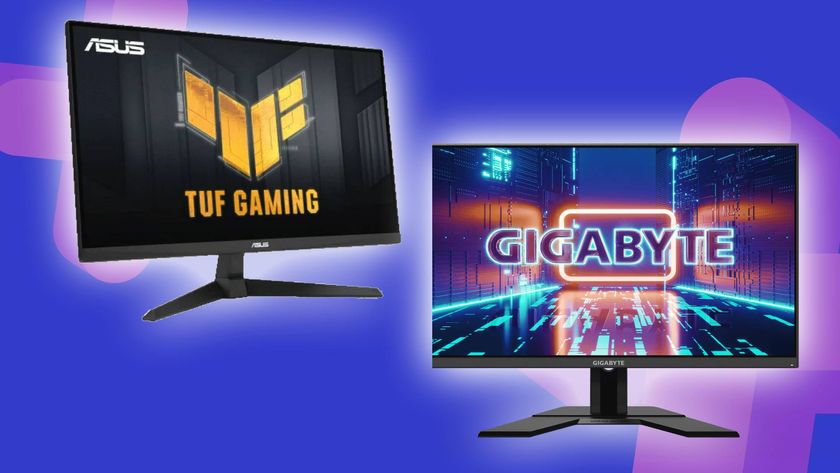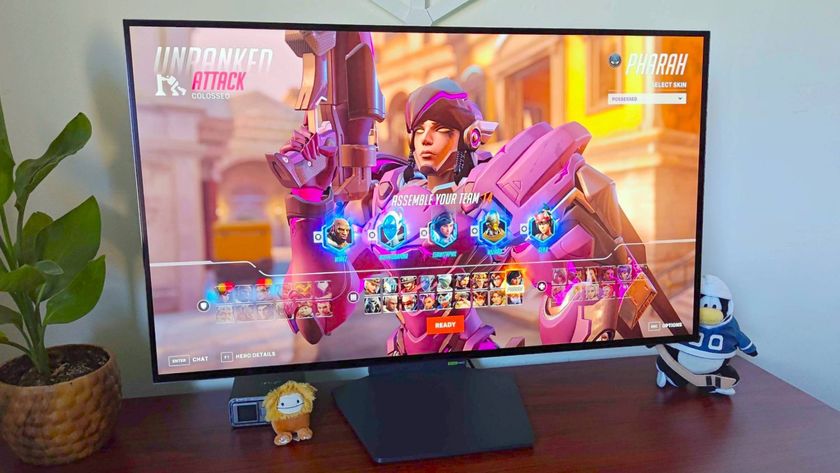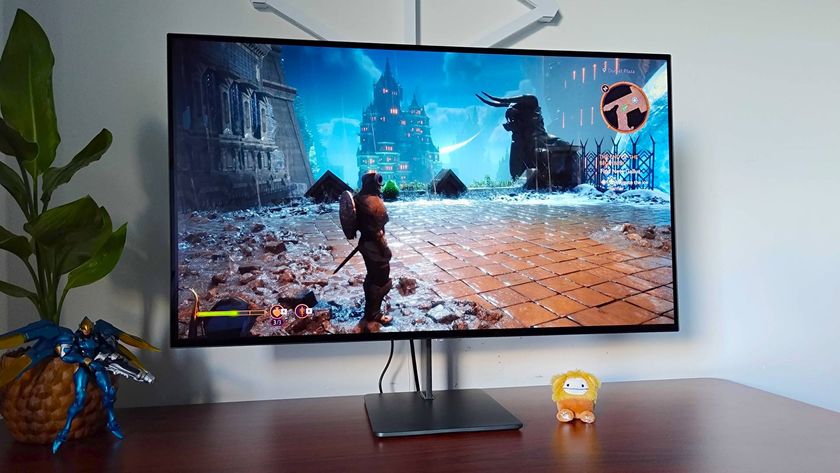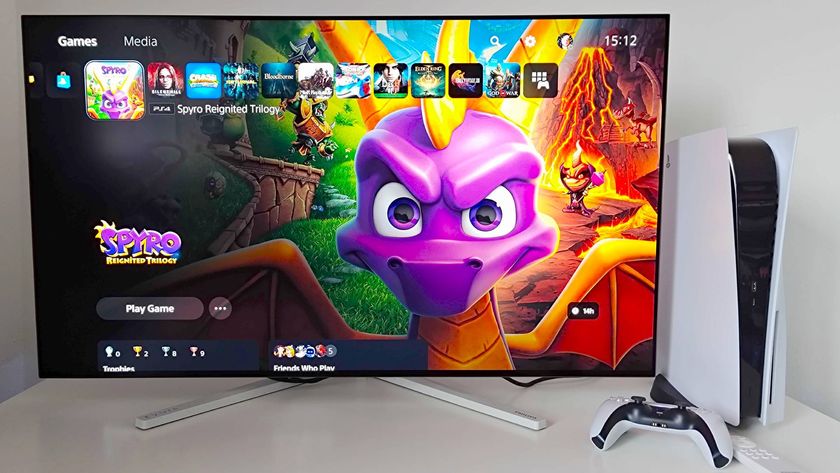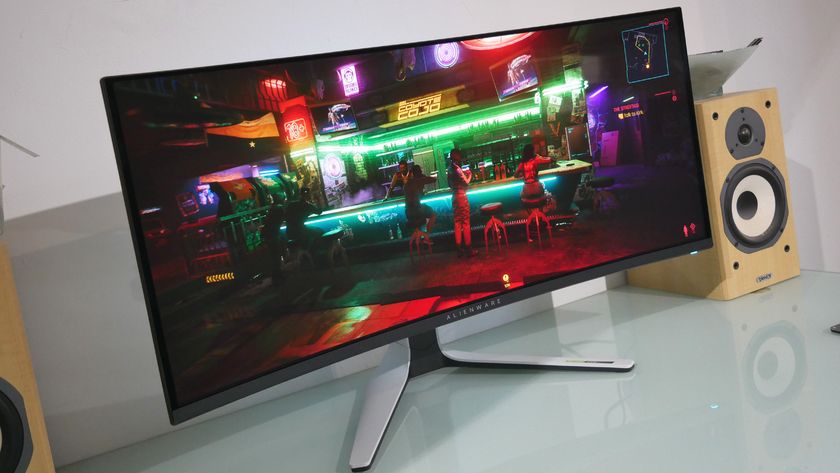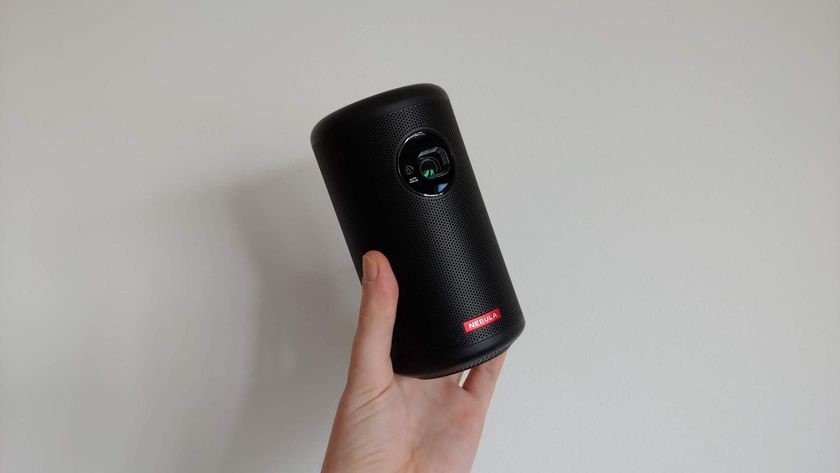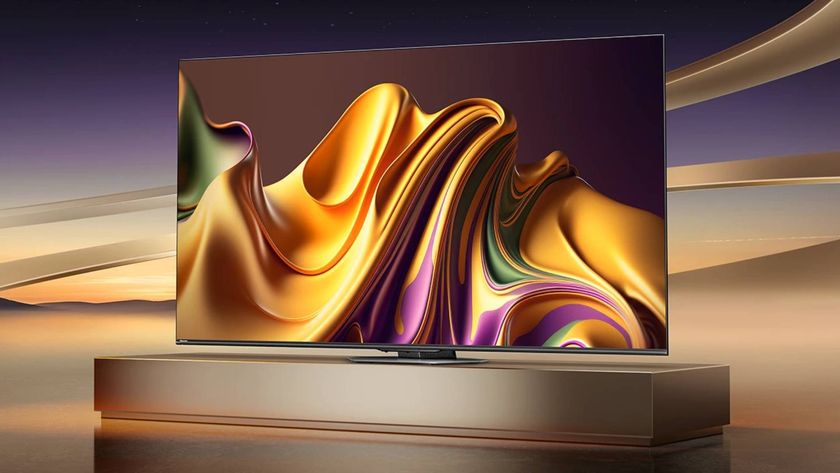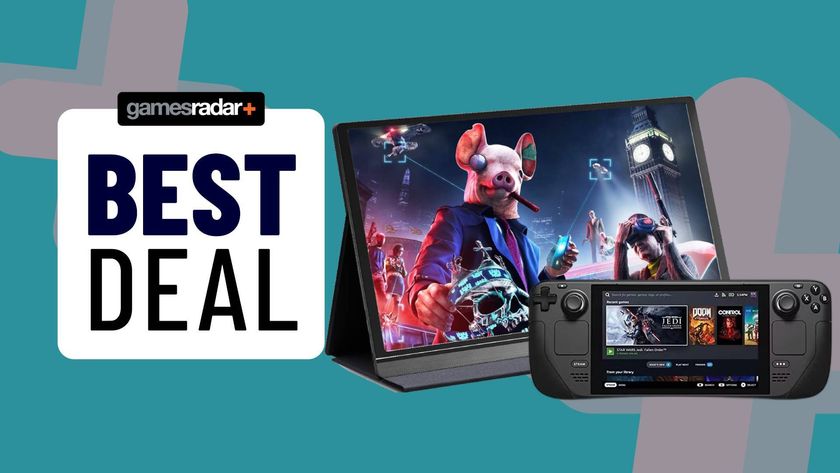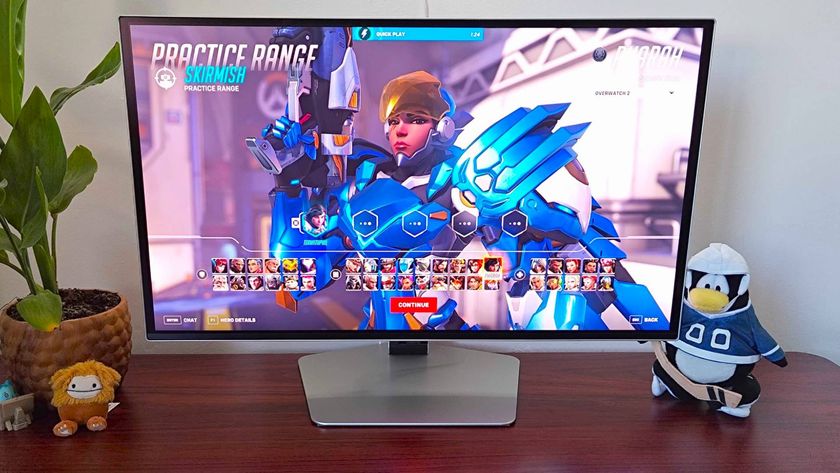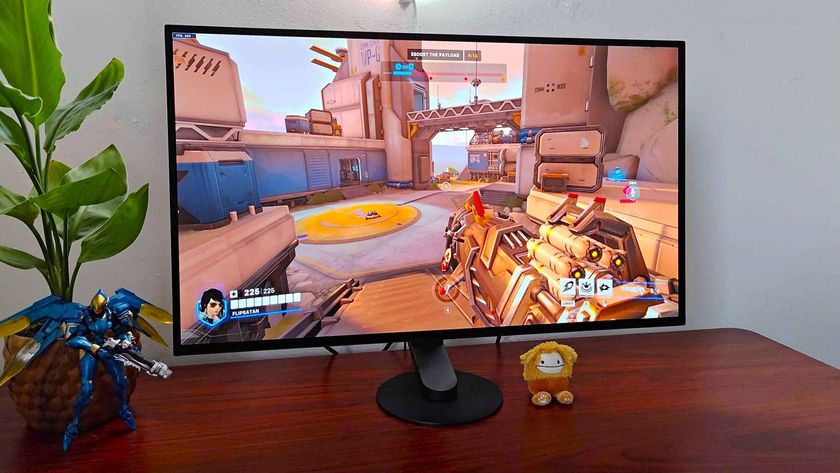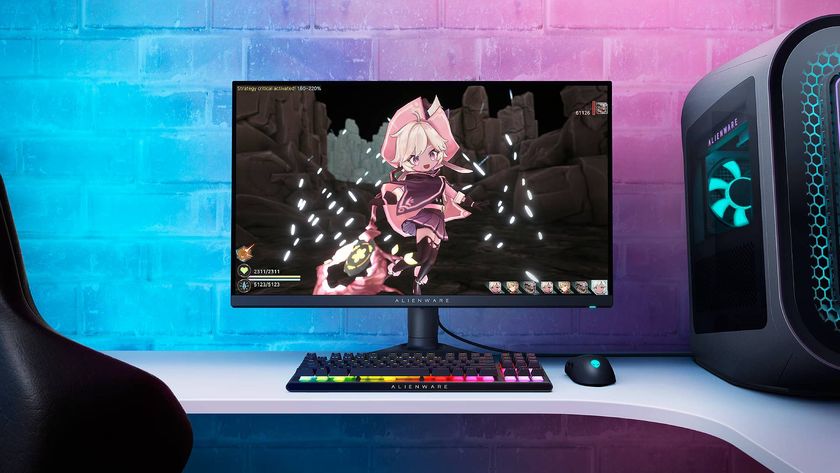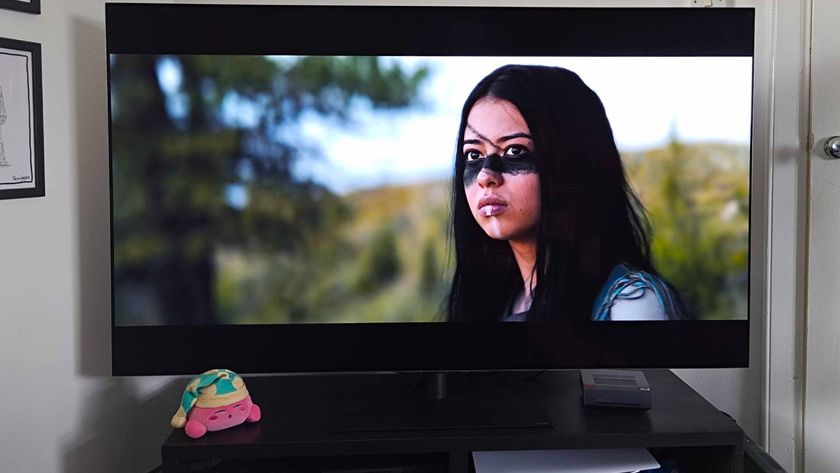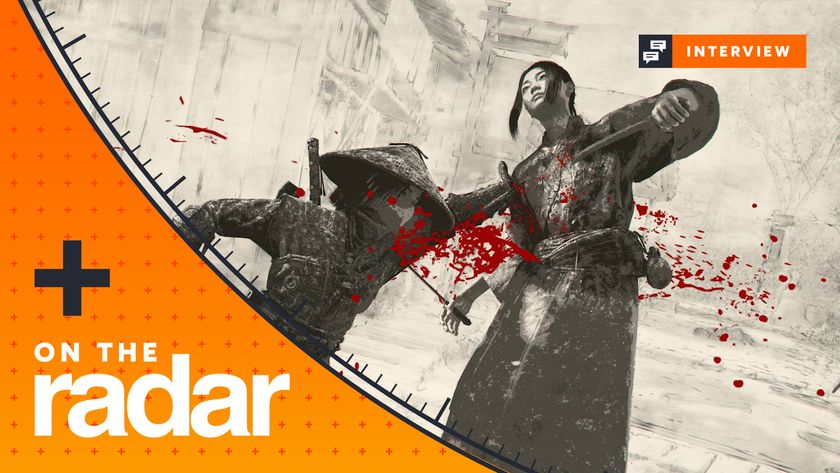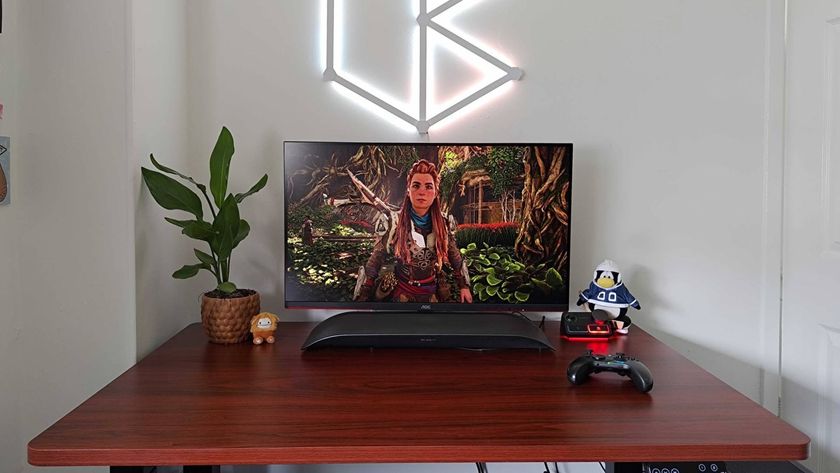The best portable monitors for gaming 2025
The best portable monitor could your on-the-go gaming setup a boost, whether you've got a laptop or a handheld.
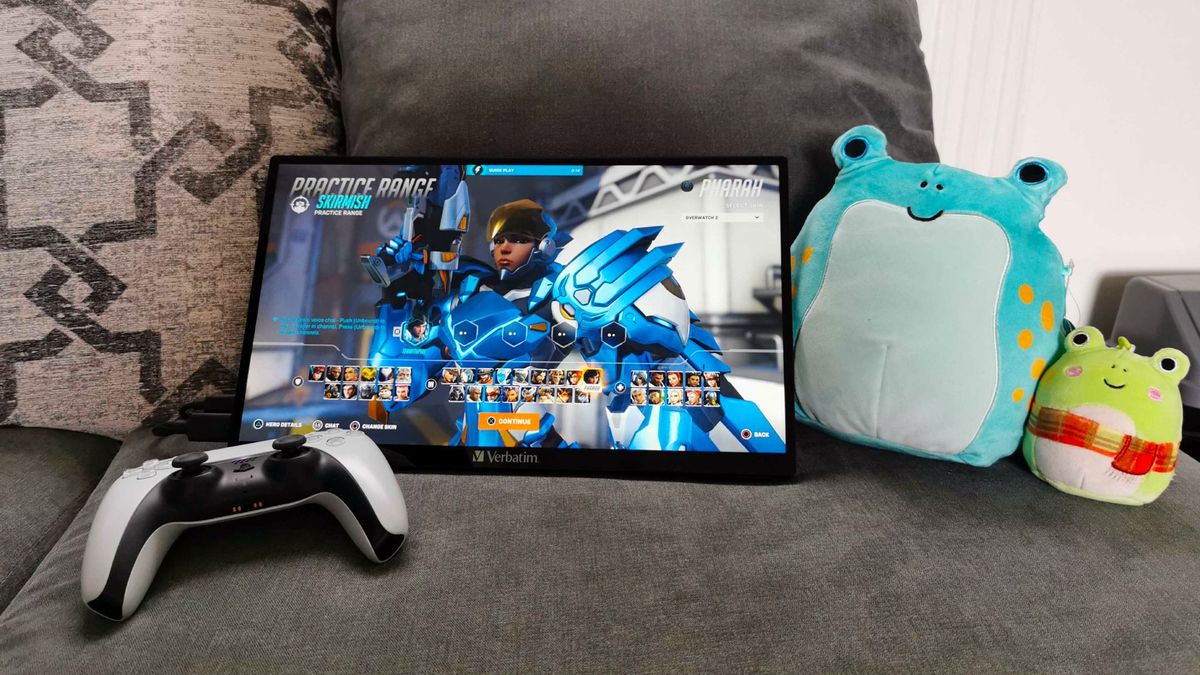
The best portable monitor for gaming is becoming commonplace in backpacks, and it's easy to see why. In 2025, lightweight screens often boast the same specs as fully fledged desktop screens, meaning you'll be able to game at high refresh rates and resolutions in coffee shops, hotels, cafes, or even the great outdoors.
I'm always on the hunt for new best portable monitor contenders to test, but the best one overall right now is the Asus ROG Strix XG17. The fact it packs a 1080p 240Hz panel means you'll be able to fully unleash the abilities of your gaming handheld or laptop while still being extremely travel-friendly. It's also got a 7800mAh battery built-in, so you'll be able to cut the cord completely while enjoying 17.3 inches of extra screen.
Of course, not every player will be looking for fast refresh rates, and just like with the best gaming monitors, there are a bunch of portable screens out there that cater to different setups. So, here are my top picks for 2025 so far, including dual-screen options and budget-friendly models that still pack a portable punch.
The quick list
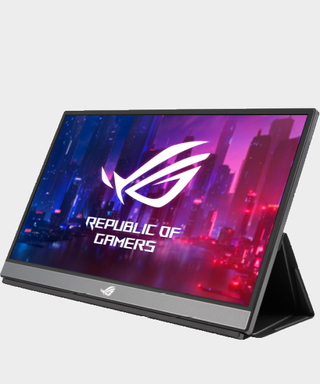
Asus' ROG portable monitor is made for gamers, which means you're getting excellent 1080p specs.
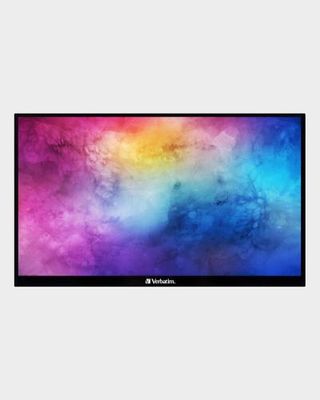
A fantastic full HD value option with surprising HDR capabilities.
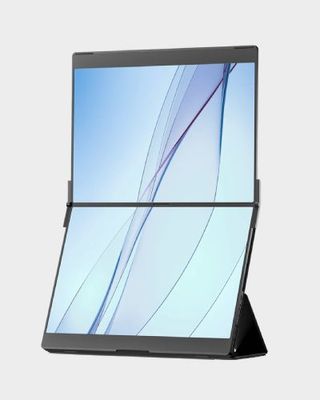
If it's dual screens you're after, the FlipGo will provide you with a double helping and excellent single cable connectivity.
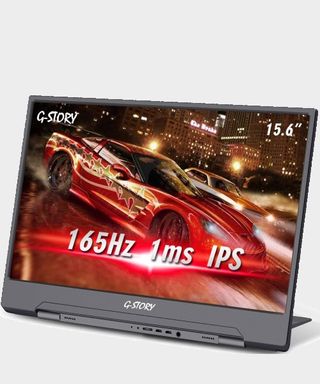
You're not getting the 240Hz rates of the Asus at the top of this list, but with a 165Hz rate and adaptive sync at your disposal this is your next best (and much cheaper) option.
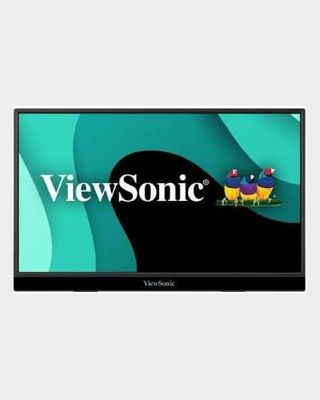
This ViewSonic model offers up a 4K resolution at a fair price - perfect for small-screen UHD gaming. You're getting wide compatibility with a range of ports and extra features.
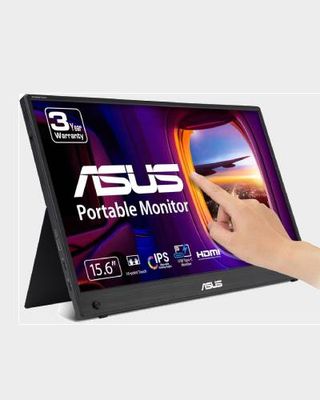
If you're after a multi-touch device with support for both Windows and Android, you've found yourself a good'un. This Asus model is perfect for big-screen thumb tapping on the go.

Phil loves using portable monitors for gaming in creative ways, and they make sure to test all the latest options in different scenarios. One week, they'll be chilling in a coffee shop with an external display and a laptop, the next they'll be heading up the Scottish Highlands with a gaming handheld and a travel-friendly screen. As our resident monitor expert, you can trust our savvy hardware review you point out all the pros and caveats you need to pick up the perfect panel.
The best portable monitor for gaming overall
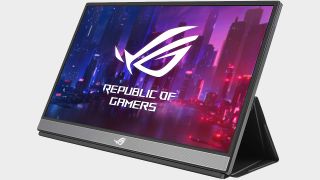
1. ASUS ROG Strix XG17
Specifications
Reasons to buy
Reasons to avoid
Arguably one of the best portable monitors specifically for gaming out there, the Asus ROG Strix XG17 pulls some serious on the go punches. It's pricey, but if you wouldn't dream of playing games at lower refresh rates even when out the house, this is the screen you'll want to go for.
✅ You want peak portable performance: 240Hz is going to keep everything snappy no matter where you are.
✅ You want a built-in battery: If you know you won't be near many power outlets, this screen's battery will have your back.
✅ You want something larger: Measuring in bigger than many gaming laptop screens, Asus's portable panel is nice and large.
❌ You don't care about speed: Not all games will benefit from a faster refresh rate, and opting for something slower will save you some cash.
❌You need something more compact : 17-inch panels are going to take up a lot of room in your backpack, and there more compact alternatives out there.
Features: Boasting a wild 240Hz refresh rate and a massive 17-inch panel, the Strix XG17 will put some monitors tethered to desks to shame. Better still, it makes room for a chonky 7,800mAh battery, so you'll be able to truly cut the cord when away from power outlets. It is 1080p, which might feel a bit low for some enthusiasts out there, but that's a small caveat considering the sheer speed of this portable solution.
Design: The ROG Strix XG17 pretty much looks like the top half of an Asus laptop, and it comes with a wedge stand built in to its protective cover. If you fancy making it look a bit more like a traditional screen, you'll have the option to pick up a tripod stand, and that could be wise if you're into putting together a pop up competitive setup.
Performance: With a 3ms response time accompanying that 240Hz refresh rate, the ROG Strix XG17 will provide fairly responsive visuals. Again, 1080p may look a little soft if you're used to using 4K screens, but things should look just fine at 17-inches. This panel is missing some perks like HDR support, and that's a shame considering the price. However, that's not going to matter much if you're intending to play fast paced FPS games where speed is everything.
Verdict: Ultimately, it's ridiculous specs that earn the Asus ROG Strix XG17 a spot at the top of our list. Its price is equally as ludicrous, but this portable monitor is going to cater more to gamers than most options out there.
The best budget portable monitor for gaming





Specifications
Reasons to buy
Reasons to avoid
Portable monitors can cost a pretty penny, but Verbatim's Portable Touchscreen Monitor manages to offer great features for less.
✅ You want great specs for less: Verbatim's screen offers surprisingly great specs considering it's cheaper than its competition
✅ You want a touchscreen: This panel will save you having plug in additional peripherals when trying to browse menus or set things up.
✅ You need something sleek: This model is pretty thin, meaning it's more likely to fit in your bag without causing a fuss.
❌ You'd rather have a built-in battery: Power banks can provide this screen with juice, but you might prefer something with an integrated solution.
❌You want something bigger : At 15-inches, this screen will feel fairly standard in terms of size.
Features: It's worth noting this screen lacks a built in battery, and that may matter if you're looking for a completely untethered experience. However, if you hook it up to your own battery bank, you'll be able to pair it with the best gaming handhelds out there and benefit from features like HDR and touchscreen support. Depending on what you're using it for, trading away an integrated battery for those traits is more than worthwhile, not to mention it helps cut cost.
Design: In terms of design, Verbatim's monitor is clad with a metal shell, and it's pretty thin even by portable monitor standards. One of its stand out elements is the fact it has a kickstand built in, so you won't have to use any dual-use cases to prop it up on a desk.
Performance: We tested the Verbatim Portable Touchscreen Monitor using laptops and handhelds like the Steam Deck, and for the price, it performed admirably. 15.6 inches is arguably the perfect size for a 1080p screen, and we didn't notice any particularly soft visuals as a result of sits resolution. Even PS5 gameplay looks pretty decent on this screen, which is a feat given that we normally use a 4K panel with our new gen consoles.
Verdict: Your mileage may vary when it comes to price, but you should be able to snag one of these monitors for under (or just over) the $200 mark in the US. If you're in the UK, you'll easily find it for under £200, and it's a fantastic option for the money.
Read more: Verbatim Portable Touchscreen Monitor review
The best dual portable monitor






Specifications
Reasons to buy
Reasons to avoid
If your aim is to put together a dual screen monitor setup you can take on the go, the Jsaux FlipGo could be key. This double-stacked panel comes armed with everything you'll need to bring a desktop experience with you, and it makes for a great way to enlarge your gaming handheld screen to boot.
✅ You need a dual screen setup: A double helping of panels will enable you to use multiple desktops on the go.
✅ You also care about productivity: While the FlipGo is great for gaming, it's real strengths lie with multitasking
✅ You've got a gaming handheld: The FlipGo will hook up to your handhelds with a single cable, enabling you to play games and run other applications in desktop mode.
❌You don't need two screens: It sounds silly, but if you don't actually need two displays, this isn't the monitor for you.
❌You'd prefer a horizontal layout : If the stacked approach isn't your bag, you might be better off looking for alternative layouts.
Features: Wearing a clam-shell design that's not unlike a gaming laptop, the FlipGo is designed to cram as much screen space into as small a footprint as possible. Rather than extending outwards like most dual options out there, Jsaux stacks things vertically, and it'll all fold down into something that'll fit in your backpack. It also comes with an orange cover that might not be to everyone's tastes, but is going to add some extra protection for the display's aluminium body.
Design: The FlipGo boasts both DisplayLink support and an UltraView mode, meaning you can use the display as two extra screens or one extended panel. You'll be able to plug USB-C devices straight into this screen with a single cable, but mini HDMI is also present to maximise compatibility. Sadly, there's no built-in battery with this one, so you'll need a power bank like the Jsaux 20000mAh 65w if you want to truly cut the cord.
Performance: While the FlipGo is two screens in one, it doesn't skimp on visual fidelity. Both panels look pretty great thanks to their QHD resolution, and contrast ain't half bad considering we're talking about IPS. The displays are also pretty bright, with that 500 nits punching through even in brightly lit areas.
Verdict: As a dual screen package, the Jsaux FlipGo is arguably one of the most appealing options out there. The nature of its layout might not be directly suited to gaming, but there's a lot you can do with a duo of screens in this formfactor.
Read more: Jsaux FlipGo review
The best high refresh rate portable monitor

4. G-Story GSV56QM
Specifications
Reasons to buy
Reasons to avoid
The G-Story GSV56QM is a portable monitor that actually gives the ASUS ROG Strix XG17 a run for its money, despite having a lower refresh rate. The part that makes this technically a better option solely based on speed is its snappier response time, which will matter if you care about every frame in competitive scenarios.
✅ You care about responsiveness: With a 1ms response rate, this is one of the snappiest portable monitors around.
✅ You play at high frame rates: The G-Story's 165Hz refresh rate will feel silky smooth when boosting fps on the go.
✅ You want great performance for less: For the price, you're getting beefy specs that are on par with more expensive options.
❌You want a faster refresh rate: For most players, 165Hz will be plenty, but those of you looking for faster will want to upspent to Asus' screen.
❌You care about looks: The GSV56QM isn't what we'd call pretty, and it's not going to impress anyone at a LAN event.
Features: At a glance, the GSV56QM feels fairly ordinary, wielding a 1080p display and a decent selection of ports, including a few USB-C connectors. Yet, it's actually a bit of a monster specs-wise, offering a 15.6-inch panel with a 165Hz refresh rate and that aforementioned 1ms response time. There's probably an argument to be had over whether 3ms paired with 240Hz is more beneficial, but it's still impressive to see responsiveness like that in this sort of package.
Design: In terms of looks, the G-Story does look slightly dated, with a fairly thick bottom bezel and a logo that feels straight out of the 2000s. It's also strangely got a pair of micro USB ports facing outwards, even though that standard should be dead and buried by now. That said, the GSV56QM does feel well thought out when it comes to design, with a headphone jack conveniently facing outwards alongside some front firing speakers.
Performance: On paper, the GSV56QM holds up as a great portable competitive gaming monitor, especially when it comes to response time. There is a bit question mark over why it labels itself as a HDR screen, however, as its 300 nit brightness capabilities and lack of local dimming mean it can't really pull off proper High Dynamic Range. That aside, this screen has the potential to be a reliable speedy screen, providing your laptop can make use of 165Hz.
Verdict: For the money, the G-Story GSV56QM is a great option for players craving high refresh rate portable gaming. If 165Hz isn't enough to satiate your needs, you'll have to splash out on our top option, but it's hard to argue with what this panel offers up for the price.
The best 4K portable monitor for gaming
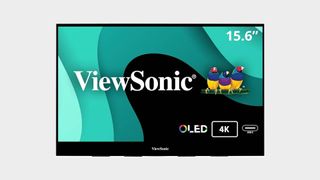
5. ViewSonic VX1655-4K
Specifications
Reasons to buy
Reasons to avoid
If your hellbent on playing at 4K no matter where you are, the ViewSonic VX1655-4K will see you right. You'll pay extra for a UHD panel, but the package doesn't skimp on build quality and features to make room for its high resolution.
✅ 4K visuals are a must: If you absolutely need to have a 4K screen, this is a good portable option.
✅ You want to play PS5: Not that we'd advise taking your console with you on a hiking trip, but this display will pair nicely with Sony's console.
✅ You need good compatibility: This display's ports will accommodate most modern consoles, PCs, and devices, so you won't be stuck trying to hook things up.
❌ You've no need for 4K: Players who aren't planning on playing games at UHD resolution will be better off choosing a lower spec option.
❌You want a bigger 4K display: At 15.6 inches, you might not feel the benefits of UHD compared to larger displays, but they won't be cheap or easy to find.
Features: Kitted out with the usual USB-C and HDMI ports, you'll be able to easily hook this screen up to anything that can handle 4K visuals. Whether you've got one of the best gaming laptops around or you just fancy torturing your Steam Deck, proper UHD visuals are on the menu with this display.
Design: Aesthetically, the ViewSonic VX1655-4K is a bit conservative, which will suit some of you out there that aren't into gamer vibes. That said, it cleverly uses its back IO block as a stick stand, meaning the extra bulk at the back serves more than one purpose.
Performance: Naturally, you'll be capped at 60Hz using this 4K monitor, but that's not going to matter so much if you're not into shooters (or lack a decent GPU). Response times aren't abysmal, but you might also want to curb your expectations if you're used to speedy desktop screens.
Verdict: We'll eventually see cheaper (and better) 4K screens hit the marker as the technology matures. For the time being, the ViewSonic VX1655-4K is a reliable way to take UHD visuals with you on the go, and we'd pick this model over various no-name brands out there.
The best touchscreen portable monitor for gaming
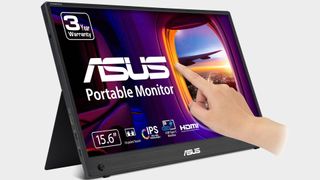
6. Asus Zenscreen
Specifications
Reasons to buy
Reasons to avoid
If picking up a touchscreen is a portable monitor priority, you'll want to head straight to the Asus Zenscreen.
✅ You want great specs: The Zenscreen comes pretty close to its gaming sibling, which might be worthwhile if you need touch input.
✅ You need versatility: Asus' touchscreen is designed to connect to a multitude of devices, whether you've got the latest smartphone or a handheld.
✅ You prefer slick looking devices: When it comes to aesthetics, the Zenscreen both looks stylish and avoids any garish gaming stereotypes.
❌ You need brighter: Out of our top picks, the Zenscreen is a little dimmer, and that might matter in some scenarios.
❌You'd rate touch for other specs: It's worth considering whether you need a touchscreen or if you'll end up just using your device to control things.
Features: This 10-point touch panel is naturally going to appeal to those of you who are productive during the day, serving as a more intuitive way to interact with PC apps and programs. However, there are surprising gaming benefits tied to this office feeling screen, as operating systems like SteamOS feel natural on a touchscreen.
Design: When it comes to looks, the Asus Zenscreen is extremely subtle. Bringing it into the office isn't going to serve as a distraction, and it effetely looks like the top part of a laptop. That's not a bad thing depending on your environment of choice, not to mention it's an appropriate look for a monitor that sticks to 1080p 60Hz.
Performance: One of the more unique traits tied to the Asus Zenscreen is its tripod support, as you can attach a stand to give it a more conventional desktop look. That could come in handy if you want to switch from using it out and about to at your desk, as it'll help you align it with your desk-bound screens.
Verdict: If you know for a fact you'll never touch this screen to navigate through anything, then you might want to look at traditional options instead. However, if you'll be using your fingers more than a controller or mouse, then this is the monitor we'd reccomend.
Best portable monitor: FAQs
Is a portable monitor worth it for gaming?
Ideally, you'll want to use a portable monitor for playing games on the go rather than solely at your desk. Achieving a lighter weight and travel-friendly design normally means playing at lower resolutions and refresh rates, which is a perfect match for handhelds and laptops but not so much for high-spec desktop PCs.
Can you use a portable monitor for gaming?
Many portable monitors are made with gaming in mind, featuring higher refresh rate capabilities and extras like HDR support. Even if you're eyeing up a basic screen designed around productivity, there's nothing stopping you connecting a laptop, PC, or console and diving into your favorite outings.
Can I use a portable monitor as a second screen?
When connected to a device, portable monitors function just like a secondary screens. You'll be able to configure your chosen display using a PC or laptop to extend or mirror your workspace, while consoles will send a single output through to the panel.
How should I choose a portable monitor?
Before clicking buy on a portable monitor, it's worth breaking down your specific needs. For example, if you're going to be working or playing games away from power outlets, you're going to want a built in battery, while FPS fans might want to focus on getting something with a higher refresh rate. Ultimately, you should pick a screen that fits your requirements, rather than just opting for the model other people claim is best.
Can you use a portable monitor with the Steam Deck
Yes, the Steam Deck can be hooked up to a portable monitor, and most models will connect via a single USB-C cable. That'll save you picking up a separate docking station, meaning you won't have to carry as much kit around. Most portable PCs like the Asus ROG Ally and Lenovo Legion Go will play nice with on the go panels too, but you will need some sort of dock to use the Nintendo Switch.
How we test portable monitors at 12DOVE
Why you can trust 12DOVE
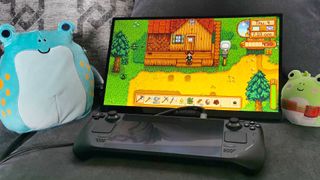
Just like with stationary screens, we spend hours testing portable monitors, but there a few key differences involved. For example, if a display has a built in battery, we add in additional benchmarks to assess longevity and capacity, as both become vital when cutting the cord.
Of course, we also check each portable monitor's specs, design, features, and performance too, and all four traits help decide whether we should recommend a display. To do this, we typically use the panel as our daily driver by playing the latest games, which enables us to push a screen's resolution and refresh capabilities to their limit. In turn, this also let's us assess other qualities like contrast, color, and brightness, all while seeing how it brings console and PC games to life.
For more information, you can read more on How we test monitors at 12DOVE here, and for an overview of our approach to gaming tech then you can check out our full Hardware Policy.
If you're looking for something TV-shaped and specialist, then check out our best TV for PS5 ad Xbox Series X, best OLED TV, and best 120Hz 4K TV guides.
Sign up to the 12DOVE Newsletter
Weekly digests, tales from the communities you love, and more

I’ve been messing around with PCs, video game consoles, and tech since before I could speak. Don’t get me wrong, I kickstarted my relationship with technology by jamming a Hot Wheels double-decker bus into my parent’s VCR, but we all have to start somewhere. I even somehow managed to become a walking, talking buyer’s guide at my teenage supermarket job, which helped me accept my career fate. So, rather than try to realise my musician dreams, or see out my University degree, I started running my own retro pop culture site and writing about video games and tech for the likes of TechRadar, The Daily Star, and the BBC before eventually ending up with a job covering graphics card shenanigans at PCGamesN. Now, I’m your friendly neighbourhood Hardware Editor at GamesRadar, and it’s my job to make sure you can kick butt in all your favourite games using the best gaming hardware, whether you’re a sucker for handhelds like the Steam Deck and Nintendo Switch or a hardcore gaming PC enthusiast.
- Rob Dwiar
- Jeremy Laird
- Duncan RobertsonHardware Editor
